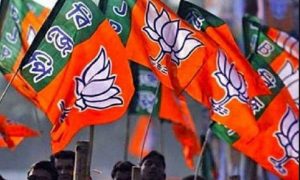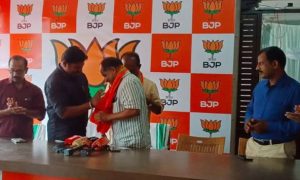It isn’t clear exactly when but sometime after the 2014 debacle, Congress realised that Rahul Gandhi has an “image problem”. Politicians frequently take liberties with truth. Sometimes they may make genuine mistakes, sometimes they spin narratives out of facts and falsities. These are taken as par for the course. Factual inaccuracies rarely dent the electoral marketability of a leader in India’s rambunctious democracy.
In Rahul’s case, however, Congress concluded that he is at a distinct disadvantage compared to his peers (especially the articulate Narendra Modi) because people take him to be infantile, immature and dismiss him as “non-serious”. This is a serious handicap for a politician, especially if that person aspires for the prime minister’s chair. Not only are the mistakes and faux pas committed by such a politician amplified in public discourse but his leadership abilities also come under question. For the anointed heir of India’s First Family, this was proving to be a tricky problem.
The BJP social media strategy of portraying the 40-plus Rahul as a ‘man-child’ may have played its part. But the Congress president’s bewildering public utterances and a seeming lack of commitment in his political career also contributed to the headache. Whatever may be the reason, the Congress understood that it had an issue to solve. It took a few steps.
The party’s name was linked to Cambridge Analytica (CA), the global firm that uses big data to (among other things) shape public opinion and even influence elections. Congress claims it never signed any deal with the company. But whistleblower Christopher Wylie, a former employee of CA, told a London court in March this year while deposing before a British Parliamentary panel that he believes Congress was indeed a client of CA.
It was clear that an earnest move to repackage brand ‘Rahul’ was underway. Congress first sought to address the perception that ‘Rahul Gandhi is an immature, gaffe-prone leader’. The challenge was to make him appear as “cerebral”, not just to counter the popular perception but to reinforce the narrative that he is a “better alternative to Modi”. As part of that move, old Family faithful Sam Pitroda was tasked with brushing up Rahul’s cerebral quotient.
Pitroda, who had served the Manmohan Singh government as an advisor to the prime minister on Public Information Infrastructure and Innovation and is credited with playing a major role in ushering in the technological revolution in India in the 1980s, is a well-connected man. He worked his networks and arranged a two-week visit for Rahul in the US. The then vice-president of his party, Rahul, met a series of Silicon Valley worthies and addressed University students in the US in September last year. He also took questions.
This served several broad purposes. One, it allowed Rahul to be portrayed as an “intelligent young man” and a “thought leader” and nullified his image of a puerile ‘man-child’. Two, it allowed Rahul the time, space and context to pick issues of his choice and criticise Modi. This is difficult in an outrage-driven media model where one issue is quickly replaced by the next. Three, the event’s high visibility in Indian media allowed Congress the chance to build a narrative against the government. Indians still attach huge value to “foreign validations”.
Four, it reinforced Rahul’s position of leadership within the party and sent a message to potential rivals of his suitability for the top job. Fifth and most important, Rahul’s constant barbs, charges and allegations against the prime minister built (or the Congress certainly hoped it would) a sort of equivalence between Modi and Rahul. The Congress (then) vice-president’s strategy of focusing exclusively on Modi was aimed at reducing the popularity gap between the two.
Rahul’s Germany sojourn is a reiteration of the same playbook. Congress has been enthused by recent opinion poll findings that Rahul is reducing the gap with Modi on popularity chart. The move to visit different German cities and take potshots at the Modi government from each venue is guided by the same principles.
In a visit to Hamburg on Wednesday, Rahul again tore into Modi’s policies. His interaction with the gathering at the Bucerius Summer School in Hamburg was a mixture of ad hominem attacks on Modi, criticisms against his government and platitudinal remarks on global issues.
It would seem that Congress has at last stumbled upon a formula to counter Modi’s still formidable popularity at home and has managed to place Rahul at the front and centre of the counter-strategy. In his mission, Rahul is being assisted by Shashi Tharoor, one of the most articulate of all Congress heavyweights. Tharoor had accompanied Rahul during the US visit as well. On the surface, Congress’s tactics seem coherent, purposeful and disruptive.
Yet for all the combined effort, Rahul still leaves a lot to be desired when it comes to articulation of thoughts or presenting solutions for the very lacunae that he is highlighting. Often, his grasp of the complexity of an issue seems superficial. He seems out of depth or suffers from an inability to support criticisms with data. Also, some of his ideas are quite disconcerting.
For instance, while commenting on inequality in India, Rahul seemed to be suggesting that if government adopts “exclusionary policies”, it may create resentment and lead to insurgency movements like the Islamic State. Rahul cited a law in Iraq that apparently “prevented” a particular tribe from getting jobs and he went on to claim that it eventually led to the birth of the Islamic State. In itself, this postulation is problematic enough, but Rahul didn’t stop there.
He segued this theory to events in India where he claimed that Modi government’s “exclusion” of tribals, Dalits and minorities from the development narrative “could be a dangerous thing”. He went on to say, according to media reports, that “it is very dangerous in the 21st century to exclude people… If you don’t give people a vision in the 21st century, somebody else will. And that’s the real risk of excluding a large number of people from the development process.”
There are so many things wrong with Rahul’s statement and hypothesis that we need to proceed one by one. First, the Congress president seems to be unaware of the origin of the Islamic State, whose rise is inextricably linked to Al-Qaeda, the Sunni insurgency movement and the US invasion of Iraq. To oversimplify the origin of the Islamic State to ‘post-Saddam’ Iraq government’s decision to disallow Tikriti tribal network from getting positions in the administration is misleading and plain wrong. In any case, the Shia-dominated Iraqi government’s decision was to exclude Baathists from their posts and disallow the Saddam regime technocrats from joining the new government, not a blanket ban on Tikrit population.
This conflation becomes more serious when Rahul links the rise of Islamist terrorism with the development narrative. His underlying suggestion, that “exclusion of people from development process” leads to insurgency movements, is a discredited thesis unsupported by data. Exclusive focus on the link between terrorism and social welfare (or lack of it) undermines the cultural, political and ideological causes that underline the creation of the Islamic State. It is preposterous to claim that poverty and inequality lead to terrorism.
In a policy review for the US-based Hoover Institution, Shmuel Bar writes on the Religious Sources of Islamic Terrorism. His paper makes the crucial point that “grievance” narrative alone cannot explain terrorism.
“It is a tendency in politically oriented Western society to assume that there is a rational pragmatic cause for acts of terrorism and that if the political grievance is addressed properly, the phenomenon will fade. However, when the roots are not political, it is naïve to expect political gestures to change the hearts of radicals. Attempts to deal with the terrorist threat as if it were divorced from its intellectual, cultural, and religious fountainheads are doomed to failure. Counter-terrorism begins on the religious-ideological level and must adopt appropriate methods. The cultural and religious sources of radical Islamic ideology must be addressed in order to develop a long-range strategy for coping with the terrorist threat to which they give birth.”
A 2016 World Bank study based on leaked documents from the Islamic State finds that its recruits are likely to be “well educated”. The study found that “69% of recruits reported at least a secondary level education while 15% left school before high school and less than 2% are illiterate”. The report also found that “neither inequality nor poverty was a driver of involvement in violent extremism, and wealthier countries were more likely to supply foreign recruits for ISIS”, according to The Guardian.
Radicalised youths who take to violent extremism are not just typical unemployed, disgruntled individuals. They could be affluent youths working under strong motivations that cannot be explained by the development narrative. Mohamed Atta, the Egyptian hijacker who blew up one of the Twin Towers on 9/11, “shopped at Walmart and ate dinner at Pizza Hut” in his last full day of life.
One doesn’t know if Rahul is aware that Jihadi John, the notorious Islamic State terrorist known for public beheading of victims, was a British national named Mohammed Emwazi “from a well-to-do family who grew up in West London and graduated from college with a degree in computer programming.”
Now, let’s come to Rahul’s claims about Modi government’s “exclusionary policies”. That is all what his elaborate hypothesis is about.
Rahul may not be aware that Modi’s flagship welfare schemes are actually doing quite well in reaching out and according financial inclusion, LPG connection, electrification, transportation connectivity and affordable housing to the last man in the queue.
Pradhan Mantri Jan Dhan Yojana (PMJDY) has brought 80 percent of adults and almost all households within the financial inclusion net, growth in LPG connection has accelerated to touch the five-crore mark, electrification of villages has been completed, though that doesn’t mean that all rural households have electricity. Rural India is slated to get 100 percent toilet coverage by December 2018, construction of houses has picked up and millions are slated to be brought under health insurance scheme Ayushman Bharat.
These welfare schemes touch the lives of the poor the most. According to an article in Openmagazine, “as per government data till March 23rd, 2018, of the over 35 million free LPG connections, 29.9 per cent have been distributed to Dalits… Scheduled Tribes, who form 8.2 per cent of India, have got 14.3 per cent of the new connections… In Uttar Pradesh, where SCs make up 21.1 per cent of the state, they account for 40.5 per cent of the 6.5 million connections awarded. In Punjab, the state with the highest proportion of Dalits, at 28.9 per cent, they have got 68 per cent of these giveaways. In Karnataka, where SCs and STs together make up 22.8 per cent of all people, the two communities have been beneficiaries of 47.3 per cent of the connections given out.”
It isn’t clear what Rahul Gandhi meant when he said: “BJP government feels tribal communities, poor farmers, lower caste people, minorities shouldn’t get the same benefits as the elite.”
Rahul’s wild conjectures, instead of refuting, reinforces the notion that he remains a peripheral politician who skims the surface of discourse and is interested only in issuing sensational statements to grab eyeballs. It does little to counter the impression that he is a non-serious leader. Moreover, the idea of highlighting India’s drawbacks and differences (not all accurate) may improve his global standing but may not go down well with the electorate in India. Does Rahul plan to contest in Germany?
For more updates: Like us on Facebook and follow us on Twitter & Instagram


































